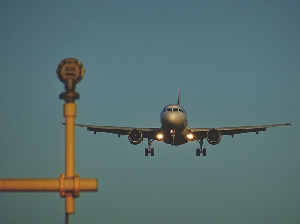 Nigeria tops the list of countries with blocked airline funds
Nigeria tops the list of countries with blocked airline funds
The International Air Transport Association (IATA) has warned that foreign airlines may leave Nigeria over $790 million in ticket revenue currently stuck in the country.
IATA’s Regional Vice President for Africa & Middle East, Kamil Alawadhi, told journalists in Geneva on Thursday that Nigeria is yet to take the necessary steps to address the issue.
He also disclosed that it was difficult for an airline to make a profit in Nigeria with a 25 percent interest rate on loans, exorbitant airport taxes, and insurance premiums six times higher than the global average.
He, however, stated that airlines based in Nigeria but operating outside the country experience lower operating costs and offer more competitive prices when compared to Nigeria.
Alawadhi criticized the unfair situation where airlines, having paid all dues, face challenges in retrieving their money due to bureaucratic delays.
Nigeria tops the list of countries with blocked airline funds, holding $792 million. Other countries include Egypt ($348 million), Algeria ($199 million), the AFI zone ($183 million), and Ethiopia ($128 million).
Industry outlook upgraded to $25.7 billion profit in 2024
IATA announced strengthened profitability projections for airlines in 2023, which will then largely stabilize in 2024. However, net profitability at the global level is expected to be well below the cost of capital in both years. Very significant regional variations in financial performance remain.
Overall revenues in 2024 are expected to rise faster than expenses (7.6% vs. 6.9%), strengthening profitability. Although operating profits are expected to increase 21.1% ($40.7 billion in 2023 to $49.3 billion in 2024), net profit margins increased at less than half the pace ( 10% ) largely due to increased interest rates expected in 2024.
Industry revenues are expected to reach an historic high of $964 billion in 2024. An inventory of 40.1 million flights is expected to be available in 2024, exceeding the 2019 level of 38.9 million and up from the 36.8 million flights expected in 2023.
Passenger revenues are expected to reach $717 billion in 2024, up 12% from $642 billion in 2023. Revenue passenger kilometers (RPKs) growth is expected to be 9.8% year on year. Although that is more than double the pre-pandemic growth trend, 2024 is expected to mark the end of the dramatic year-on-year increases that have been characteristic of the recovery in 2021-2023.
The high demand for travel coupled with limited capacity due to persistent supply chain issues continues to create supply and demand conditions supporting yield growth. Passenger yields in 2024 are expected to improve 1.8% compared with 2023.
Reflecting the tight supply and demand conditions, efficiency levels are high with the load factor expected to be 82.6% in 2024, slightly better than 2023 ( 82% ) and the same as in 2019.
Airline profitability for 2023 performed better than expected in IATA’s June outlook. Revenues for 2023 are now expected to reach $896 billion ($93 billion higher than expected). Expenses also grew to $855 billion ($74 billion higher than the previous forecast). That translated into a $23.3 billion industry-wide net profit. Naira Devaluation Deepens Economic Crisis in Nigeria
Although that is significantly above the $9.8 billion forecast in June, the additional $13.5 billion profit is equal to just 1.4% of revenue. The net profit margin is just 2.6% meaning that airlines will have earned on average $5.44 per passenger carried in 2023.
The improvement was entirely driven by the passenger business that saw revenues increase compared with the previous forecast by $96 billion, to $642 billion. Cargo revenues in 2023 were $134.7 billion, which underperformed the $142.3 billion expected in June.
- World's most expensive private jets and who owns them
- FLASHBACK: Watch footage of Ghana Airways receiving new Fokker 2,000 aircraft in 1974
- New Managing Director of GACL introduced to staff
- FLASHBACK: World's largest passenger aircraft lands in Accra for second historic time
- Management of Ghana Airports Company express commitment to achieving vision
- Read all related articles
